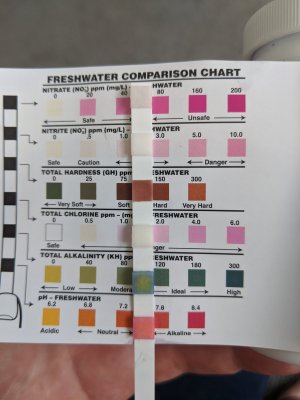I recently got a BRS 6 stage RODI system and am gearing up to start a saltwater tank. I have hard, alkaline water and have attached a test strip from this morning below. Is anyone able to give me an idea of how often I'll need to replace the media based on this? I'm trying to get a feel for how much I'll need to spend on media and how frequently. Thanks.
















